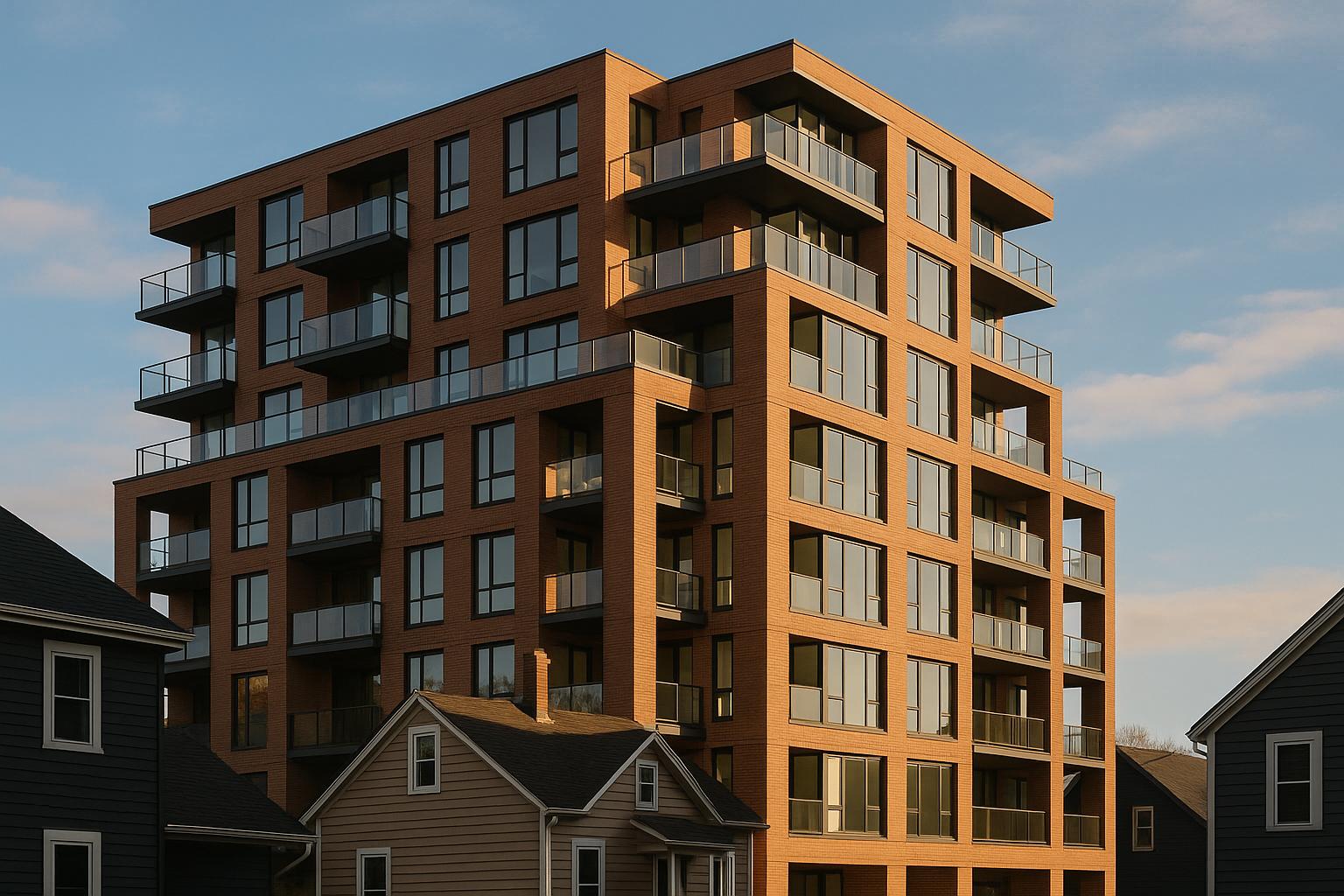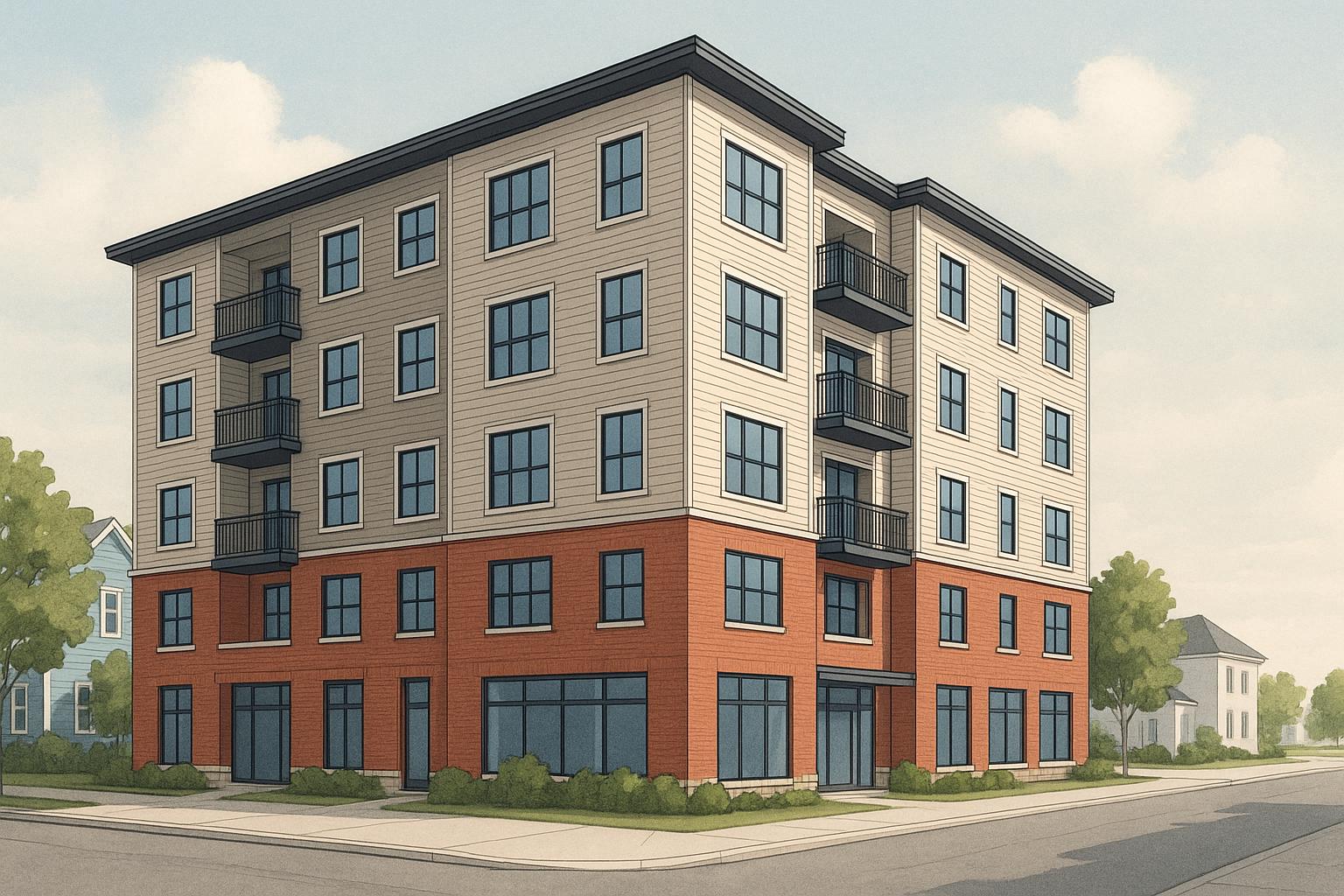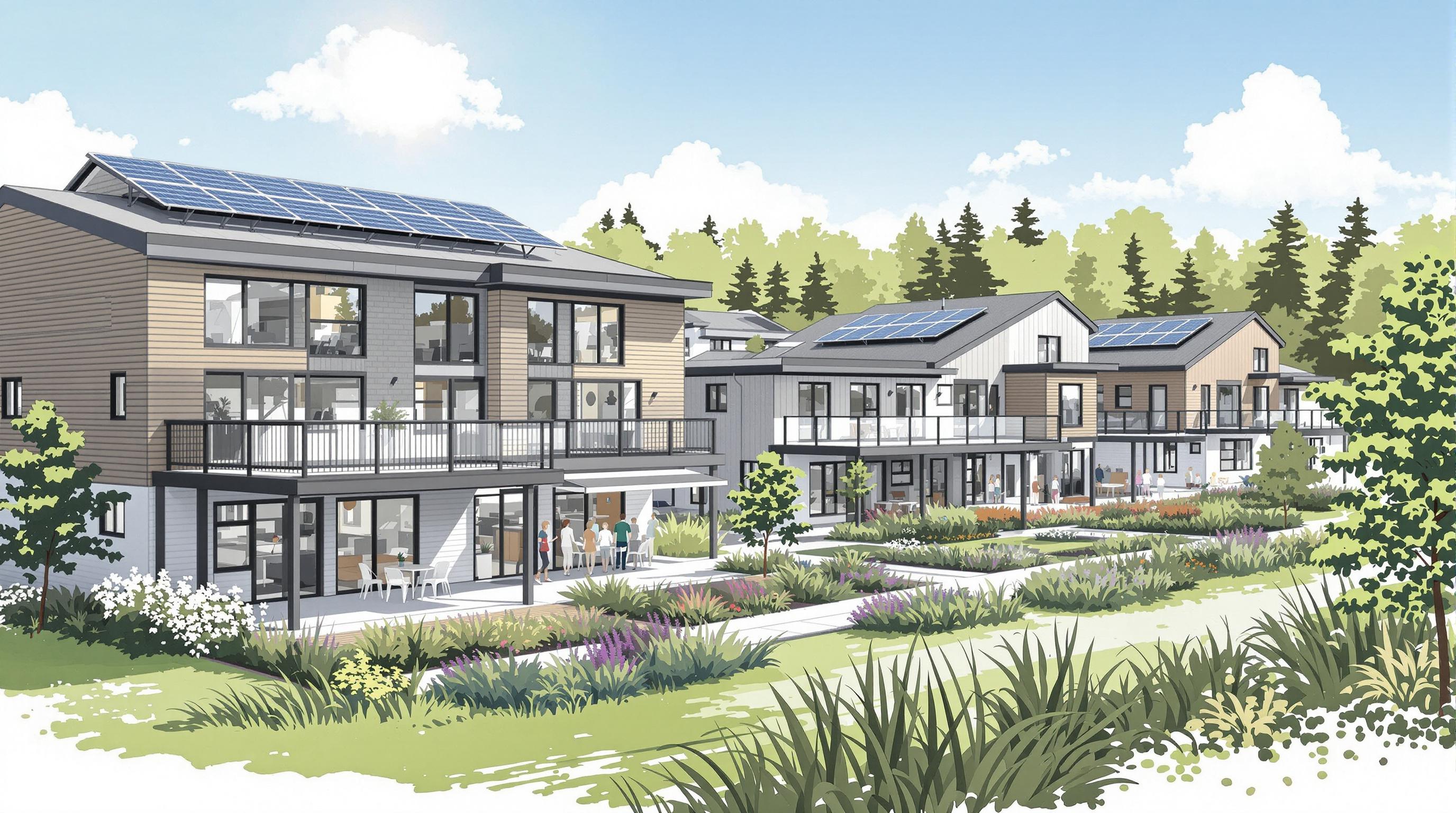Before moving tenants into a multi-unit rental property in Nova Scotia, you’ll need an occupancy permit. This permit confirms your building meets safety and building code standards, ensuring it’s ready for use. Here’s a quick breakdown of what inspectors check and what you need to prepare:
- Building Code Compliance: Includes structural integrity, accessibility features (for buildings with 4+ units), insulation, soundproofing, and proper ventilation.
- Safety Systems: Electrical systems, fire safety measures (smoke alarms, fire-rated barriers, emergency exits), and heating systems must meet provincial standards.
- Utility Connections: All electrical, water, sewer, and gas connections require certification and inspection.
- Habitability Standards: Inspectors check plumbing, heating, air quality, and pest prevention to ensure a safe and comfortable living environment.
To avoid delays, have all permits, certifications, and inspections completed in advance. Missing documentation or failed inspections can cost you time and rental income. Coordinating with professionals and scheduling inspections early ensures a smoother process.
(The Lack of) Building Permits in Halifax, Nova Scotia: Canada's Open Secret.
Requirements You Must Meet for Your Occupancy Permit
Before Nova Scotia inspectors can approve your occupancy permit for a multi-unit rental property, there are three main categories of requirements you’ll need to satisfy. These standards ensure tenant safety, protect your investment, and set the groundwork for a successful inspection process.
Nova Scotia Building Code Compliance
Your property must adhere to the Nova Scotia Building Code, which covers essential aspects like structural integrity, accessibility, and other construction standards. These rules outline minimum requirements for construction materials, room dimensions, ceiling heights, and ventilation. For multi-unit properties, additional considerations include soundproofing between units, fire-resistant barriers between floors and units, and proper egress routes.
Energy efficiency is another key focus. The building envelope must meet specific insulation standards, and windows and doors need to achieve certain thermal performance ratings. These measures not only help control operating costs but also ensure tenants remain comfortable year-round.
Accessibility requirements depend on your building’s size and layout. Typically, properties with four or more units must include features like accessible entrances, wider doorways, and at least one accessible unit in the building.
Required Safety Systems and Equipment
Inspectors will thoroughly examine all safety systems to ensure they meet provincial guidelines. Among these, electrical systems require the most detailed documentation and inspections.
All electrical work must be done by certified professionals and undergo both rough-in and final inspections. Nova Scotia Power’s Inspection Services manages these inspections, ensuring compliance with the Canadian Electrical Code.
"Wiring inspectors will inspect the electrical installation to ensure the installation conforms to applicable standards, Regulations and the latest edition of the Canadian Electrical Code, Part 1. These standards ensure the electrical installation is safe from fire and shock hazards." [1]
Every electrical component, from light fixtures to GFCI outlets, must have certification from organizations like CSA, ESA, or ULC to ensure safety and reliability.
Fire safety systems are equally critical. Smoke alarms must be hardwired with battery backups in every unit, and carbon monoxide detectors are required wherever fuel-burning appliances or attached garages are present. Larger buildings may also need sprinkler systems, fire-rated doors, and emergency lighting in common areas and between units, depending on the building’s size and design.
For heating systems that use fuel, additional permits and inspections are required. Organizations like UL, Intertek, or CSA must certify these systems, ensuring they meet safety standards. Proper installation and field evaluations are non-negotiable.
Utility Connections and Certifications
Before your occupancy permit is approved, all utility connections must be completed and certified. Electrical connections require both rough-in and final inspections to verify compliance with code requirements.
For water and sewer systems, proper connections and permits are essential. This becomes especially important when converting a basement into a legal apartment or changing a building’s use classification. A valid sewage system certificate is mandatory and must be up-to-date.
Gas connections for heating, hot water, or cooking appliances also require careful coordination with local gas utilities. All gas lines must pass pressure tests, and appliances need proper venting to meet safety standards.
Timing is a crucial factor when it comes to utility certifications. Electrical inspections must happen after rough-in work is complete but before walls are closed up. Final inspections require all systems to be fully operational, which often involves coordinating multiple trades and inspection schedules. Missing a certification or failing an inspection can delay your occupancy permit, postponing your ability to start renting out units. Ensuring all utility standards are met is essential to avoid setbacks and maintain smooth rental operations.
What Inspectors Examine During Your Occupancy Inspection
Inspectors assess your property to ensure it meets Nova Scotia's safety and habitability standards. Their evaluation focuses on three key areas to confirm the property is ready for tenants to move in safely.
Interior and Exterior Building Inspections
During these inspections, inspectors ensure that the structural and finishing elements of your property comply with building codes and provide a safe environment for tenants.
Inside the property, they examine wall finishes to ensure proper installation and fire resistance, especially between units where fire-rated barriers are required. Flooring is checked for gaps or uneven surfaces that could pose safety risks. Windows and doors are inspected for smooth operation, weatherproofing, and adherence to egress requirements.
Ventilation systems, such as bathroom exhaust fans and kitchen range hoods, are reviewed to confirm they are correctly installed and vented to the exterior.
Outside, the inspection covers siding and exterior finishes to verify proper installation and weatherproofing. Roofing systems must include flashing, gutters, and drainage to prevent water damage. Inspectors also evaluate the foundation and grading to ensure water drains away from the building, looking for cracks, settlement, or other issues that could compromise the structure.
Balconies, decks, and railings are inspected for safety. Railings must meet height requirements and have spacing small enough (no more than 10 centimetres) to prevent children from slipping through. These elements must also support the required loads.
Fire Safety and Emergency Exit Requirements
Fire safety is a top priority during inspections due to its critical importance for tenant safety. Inspectors verify that emergency exit routes are clearly marked, unobstructed, and lead directly to safe outdoor areas.
Each unit must have at least one exit door that opens to the outside or to a protected corridor. These doors must swing outward in the direction of travel and be operable from the inside without a key.
Smoke and carbon monoxide detectors are closely reviewed. They must be hardwired, interconnected, and equipped with a battery backup. If one alarm activates, all alarms in the unit must sound simultaneously.
Inspectors also check fire separation between units. Walls, floors, and ceilings must maintain their fire ratings, with all penetrations sealed using fire-rated materials. This includes areas where pipes, wires, or ducts pass through.
In multi-storey buildings, stairways and corridors must meet width requirements and have proper handrails. Emergency lighting is tested to ensure it activates automatically during power outages, allowing safe evacuation.
Habitability Standards Check
Beyond safety, inspectors assess the overall habitability of the property to confirm it provides a healthy and comfortable living environment.
Plumbing systems are tested to ensure all fixtures work properly, water pressure is consistent, and hot water systems can meet the needs of all units. They also check for leaks, proper drainage, and measures to prevent cross-connections.
Heating systems must maintain a minimum indoor temperature of 20°C in all living areas. Inspectors verify that heating equipment is installed correctly, vented safely, and certified for use. Each unit must have its own temperature controls.
Insulation and air sealing are evaluated for energy efficiency and comfort. Inspectors may use tools like thermal imaging to identify gaps in insulation, particularly around windows, doors, and other openings.
They also assess indoor air quality, ensuring proper ventilation rates and moisture control. Kitchens and bathrooms must have exhaust fans to manage humidity and odours. Signs of mould, poor air circulation, or excessive moisture are flagged as potential issues.
Electrical systems undergo thorough checks to confirm all outlets, switches, and fixtures are safe and functional. Ground fault circuit interrupters (GFCIs) must be installed in wet areas like bathrooms and kitchens. Electrical panels must be accessible and correctly labelled.
Finally, inspectors review pest control measures to ensure the building is sealed against rodents and insects. Gaps around pipes, vents, and other openings are examined for potential entry points.
For properties requiring accessibility features, inspectors ensure that ramps, doorway widths, and accessible units meet provincial standards for barrier-free design. Meeting these requirements ensures your occupancy permit is issued without delay, making your property tenant-ready.
sbb-itb-16b8a48
How to Avoid Delays in Your Permit Process
Proper preparation and coordination are essential for getting occupancy permits approved without unnecessary delays. By following these steps, which align with the Nova Scotia Building Code standards, property owners can navigate the process more efficiently. Proactive planning and timely action are key to keeping things on track.
Get Your Documentation Ready Early
Having all required paperwork in order before inspections begin is a crucial step. Inspectors rely on these documents to confirm that your property meets all necessary standards, and any missing or incomplete paperwork can slow things down.
Start by gathering construction blueprints and approved permits that show the work adheres to code. If changes were made during the construction phase, ensure you have proper change orders or amendments filed with your municipality.
Next, collect all certification documents, such as:
- Electrical safety certificates from licensed electricians.
- Gas installation certifications from qualified technicians.
- Plumbing certifications that comply with the National Plumbing Code.
Fire safety is another critical area. This includes documentation for smoke and carbon monoxide detectors, fire separation materials, and fire suppression systems. These certificates should be signed by qualified professionals and include details like model numbers and installation dates.
In some cases, municipalities may require energy efficiency reports. These confirm that insulation, air sealing, and heating systems meet current standards, especially for newer construction projects.
To stay organized, consider creating a digital filing system with scanned copies of all documents. Keeping physical copies in a clearly labelled binder on-site is also helpful. This dual approach ensures you can quickly provide any missing paperwork during inspections.
Schedule and Coordinate Inspections in Advance
Booking inspections early and maintaining clear communication with municipal offices can help you avoid scheduling conflicts or delays.
As your construction nears completion, contact your municipal building department to arrange inspections. Many municipalities require at least 48 to 72 hours' notice, and inspection slots can fill up quickly, especially during busy periods.
If possible, try to coordinate multiple inspections on the same day to save time. Before the inspector arrives, prepare your property by:
- Clearing construction debris.
- Unlocking all doors.
- Ensuring all areas are well-lit and accessible.
Poor accessibility or inadequate lighting can result in inspectors needing to return for follow-up visits, which can delay the process. If you anticipate any issues, communicate with the inspection office ahead of time. Keeping detailed records of appointments, including inspector names and contact details, can also be helpful if additional inspections are needed.
Partner with Integrated Construction Services
Disjointed work among different trades often leads to delays in the permit approval process. Integrated construction services offer a streamlined alternative by managing every aspect of the project under one umbrella.
Companies like Helio Urban Development provide design-build solutions that address potential permit delays from the outset. Their approach includes pre-planning with architects and engineers to ensure design elements comply with the Nova Scotia Building Code. This kind of preparation can significantly reduce approval times and associated costs.
Integrated services also simplify document management by keeping all required certifications easily accessible. With a single team handling the entire process, accountability is centralized, ensuring deadlines are met and requirements are fulfilled efficiently. [2]
Conclusion: Getting Your Occupancy Permit Approved
Securing your occupancy permit in Nova Scotia doesn’t have to be a daunting task if you approach it with careful preparation and smart planning. By knowing what inspectors focus on - like compliance with building codes, safety systems, and utility connections - you can sidestep common issues that might otherwise slow down your project.
The trick is to weave the permit process seamlessly into your construction timeline. Keeping your documentation in order, scheduling inspections promptly, and working with professionals familiar with Nova Scotia's requirements will help you avoid the delays that so many property owners face. This proactive approach ensures smoother inspections and quicker approvals.
Using integrated construction services can be a game-changer. These services bring together planners, architects, engineers, and construction crews under one umbrella, simplifying documentation and centralizing accountability. For example, companies like Helio Urban Development ensure compliance from the very beginning, eliminating the confusion and finger-pointing that often come with managing multiple contractors.
Delays in obtaining your permit can be expensive - costing as much as $8,800 a month in lost rental income. On the other hand, those who plan ahead and collaborate with experienced teams are able to start collecting rent on schedule. These financial realities highlight why every step of the permit process is so important.
Your occupancy permit isn’t just a piece of paper - it’s the key to unlocking rental income and achieving your investment goals. By meeting code requirements, coordinating inspections, and working with professionals who understand Nova Scotia’s building landscape, you can navigate the process efficiently and get your tenants moved in without unnecessary delays.
FAQs
What causes delays in getting an occupancy permit in Nova Scotia, and how can they be prevented?
Delays in securing an occupancy permit in Nova Scotia often stem from incomplete or incorrect paperwork. Missing documents or errors in submissions can cause applications to be sent back for revisions, potentially stretching the timeline by weeks or even months.
Another frequent challenge is a lack of understanding or adherence to local municipal regulations, which can differ significantly across jurisdictions. Overlooking specific requirements may trigger additional inspections or necessary adjustments, further slowing down the approval process.
To sidestep these delays, double-check that all paperwork is accurate and fully completed before submitting it. It's also a good idea to engage with local planning departments early on to clarify any specific requirements. For a smoother process, you might want to collaborate with an integrated design-build team, as they can help ensure all regulations are met while keeping things on track.
What accessibility features are required for buildings with fewer than four units compared to those with four or more units?
In Nova Scotia, accessibility requirements depend largely on the size of the building. For structures with four or more units, stricter standards are typically in place. These can include features like wheelchair-accessible entrances, wider doorways, and elevators for multi-storey buildings. On the other hand, smaller buildings with fewer than four units tend to have more relaxed requirements. However, it’s still essential to review local building codes to ensure everything is up to standard.
If you’re uncertain about the specific regulations for your property, reaching out to a professional builder with experience in multi-unit residential projects can be invaluable. They can guide you through the process and help prevent delays in securing an occupancy permit.
What are the advantages of using integrated construction services to secure an occupancy permit in Nova Scotia, and how do they simplify the process?
Integrated construction services provide a streamlined and efficient approach to obtaining an occupancy permit compared to traditional methods. By managing all aspects of the project within a single team, these services ensure that submissions are reviewed collectively by the necessary agencies. This reduces the chances of delays caused by miscommunication or fragmented processes. In contrast, traditional methods often involve coordinating separately with various agencies and consultants, which can lead to inefficiencies and extended timelines.
These services also leverage advanced tools like Building Information Modelling (BIM) to conduct pre-submission checks and support collaborative workflows. This proactive strategy helps catch errors early, limits the need for revisions, and keeps the project moving smoothly while meeting safety standards, building codes, and utility connection requirements. For property owners, this translates into a faster, more predictable process for securing permits and getting their property ready for occupancy.



